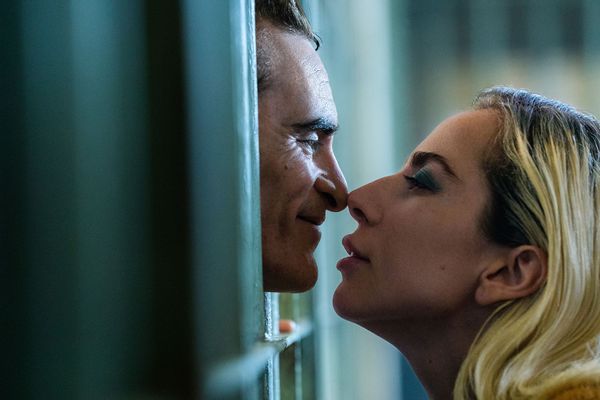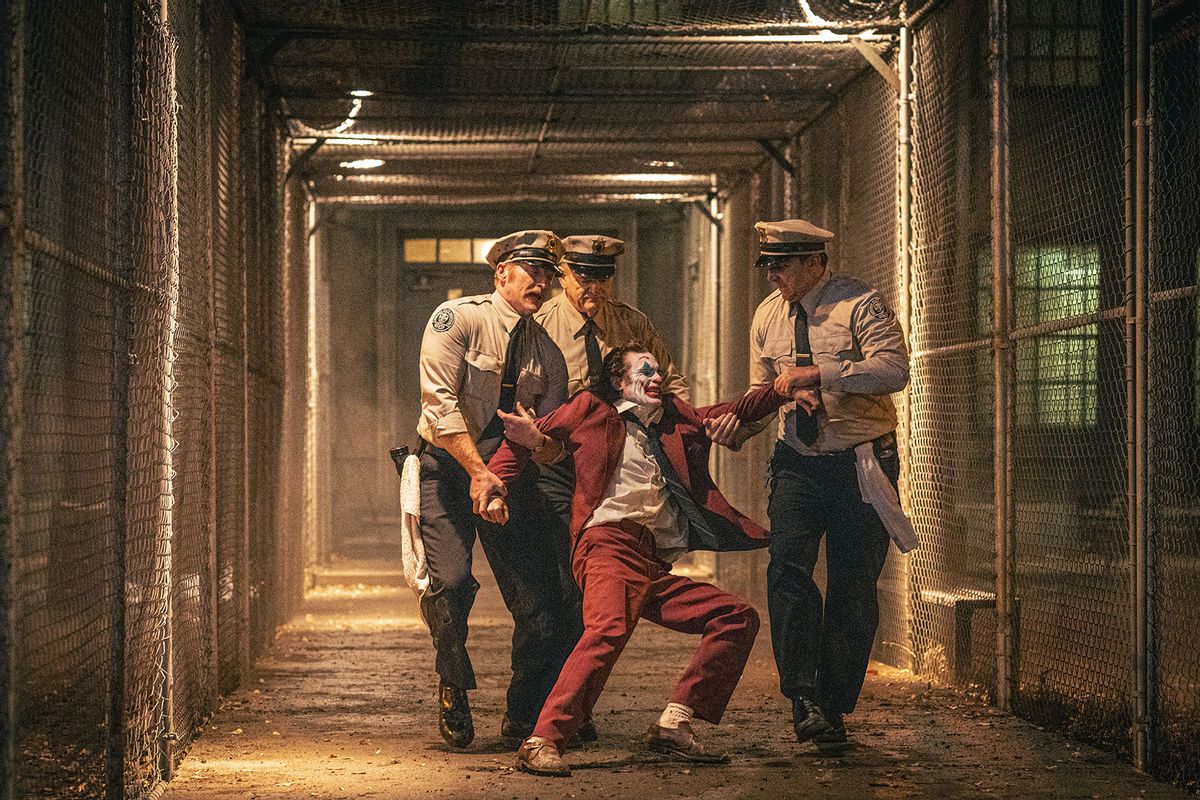When "Joker" hit theaters in 2019, I criticized the movie in a review that called out its shallow and problematic depictions of mental illness. Yes, "Joker" was very entertaining as a gritty Martin Scorsese-style psychological thriller, but it also stigmatized mental illness through the grotesque way it fixated on the myriad disorders held by antihero Arthur Fleck (performed with characteristic panache by Joaquin Phoenix). The consequence was that, when "Joker" evolved into an action movie with a bloody climax, Fleck's mental health became equated in viewers' minds with the subsequent outburst of graphic violence.
Not that moviegoers objected: "Joker" was a crowdpleaser, grossing over $1 billion worldwide and ranking 83 among voters for IMDB's Top 250 Movies of All Time. Perhaps inevitably a sequel was made, which brings us to the recently-released "Joker: Folie à Deux." The movie's subtitle refers to a real mental health condition; folie à deux, also known as shared psychosis or shared delusional disorder (SDD), occurs when symptoms of a delusional belief are transmitted between individuals.
In a lesser film, this could have been a warning sign of more insensitive characterizations of mental illness. Much to my delight, however, the subtitle "folie à deux" is not just a clever flourish by the filmmakers. As if to compensate for the first movie's deficiencies, "Joker: Folie à Deux" is a story entirely about thoughtful depictions of different psychological conditions — and the theme that drives the plot is the literal "folie à deux" of characters sharing Fleck's fantasies about being Joker, foremost among them Fleck's love interest Harleen "Lee" Quinzel (Lady Gaga). When Salon spoke to experts on folie à deux (who unlike the author had not seen the movie), they described a condition very similar to the one shown with surprising empathy and depth on the big screen.
 Joaquin Phoenix as Arthur Fleck and Lady Gaga as Lee Quinzel in "Joker: Folie A Deux" (Warner Bros. Pictures/Niko Tavernise/DC Comics)This is no mean feat, given that folie à deux is very difficult to study. Dr. Sanja Bjelan from the Clinical Center of Vojvodina' Psychiatry Clinic, who has written about folie à deux, told Salon that "regardless of the fact that it was first described back in 1860, the number of recognized and documented cases is still relatively small, so I consider the film (which I haven’t seen but now definitely plan to), to be a 'good' media attention that 'folie a deux' will attract." As Bjelan explained, folie à deux refers to situations in which delusions develop in an individual who is in close contact with one or more similarly deluded individual(s). For it to be folie à deux, the delusions must be similar enough in content to each other that one can reasonably deduce they were transmitted. Importantly, for folie à deux to exist, it must mean that "the disturbance is not better accounted for by another psychotic disorder (e.g., schizophrenia) or a mood disorder with psychotic features and is not due to the direct physiological effects of a substance (e.g., a drug of abuse, a medication) or a general medical condition."
Joaquin Phoenix as Arthur Fleck and Lady Gaga as Lee Quinzel in "Joker: Folie A Deux" (Warner Bros. Pictures/Niko Tavernise/DC Comics)This is no mean feat, given that folie à deux is very difficult to study. Dr. Sanja Bjelan from the Clinical Center of Vojvodina' Psychiatry Clinic, who has written about folie à deux, told Salon that "regardless of the fact that it was first described back in 1860, the number of recognized and documented cases is still relatively small, so I consider the film (which I haven’t seen but now definitely plan to), to be a 'good' media attention that 'folie a deux' will attract." As Bjelan explained, folie à deux refers to situations in which delusions develop in an individual who is in close contact with one or more similarly deluded individual(s). For it to be folie à deux, the delusions must be similar enough in content to each other that one can reasonably deduce they were transmitted. Importantly, for folie à deux to exist, it must mean that "the disturbance is not better accounted for by another psychotic disorder (e.g., schizophrenia) or a mood disorder with psychotic features and is not due to the direct physiological effects of a substance (e.g., a drug of abuse, a medication) or a general medical condition."
Instead of stigmatizing mental illness, "Joker: Folie à Deux" becomes a meditation on what mental illnesses can reveal about our societies.
Dr. Giulia Menculini from the University of Perugia's Department of Psychiatry, who has also studied folie à deux, said that the "fixed and false beliefs" held by affected patients "are not necessarily bizarre and incoherent in their content and the transmission of a delusional belief from one individual to another. The contents of the delusions can be heterogeneous, so the clinical presentations of this disorder can be different — in some cases, since delusions are isolated symptoms, the disorder can remain undiagnosed for years. Generally, the relationship between the two individuals is very close (e.g., they are relatives) and one of them can be identified as 'dominant,' while the other one is more likely to present a dependent personality."
This is not precisely the way the condition is depicted in "Joker: Folie à Deux," although the creative liberties taken are mostly understandable. The premise of "Joker: Folie à Deux" is that Fleck — after spending several years in Arkham Asylum awaiting trial for five of his murders from the previous movie (there is a sixth for which he was never caught) — is now finally getting his day in court. As the legal drama unfolds, however, Fleck and Quinzel complicate things by sharing their mutual delusion of Fleck being Joker with as wide an audience as possible. The final act of "Joker" already established that thousands of people in this fictional universe identify with Fleck's antisocial behavior; the world is full of bullied victims like Fleck who wish they could one day lash out as he does. Because both Fleck and his followers suffer from genuine social and economic injustices, the movie shows a willful determination from all parties (led by Gaga's firecracker Quinzel) to embrace Fleck's delusion a la folie à deux.
Want a daily wrap-up of all the news and commentary Salon has to offer? Subscribe to our morning newsletter, Crash Course.
While only Quinzel and a handful of fellow Arkham inmates ever get personally close enough to Fleck to be direct recipients of his Joker fantasy in the manner of literal folie à deux, Fleck channels an energy of sincere social outrage, one that he can barely articulate but eloquently expresses through his mannerisms and behaviors whenever he assumes the Joker character.
Instead of stigmatizing mental illness, "Joker: Folie à Deux" becomes a meditation on what mental illnesses can reveal about our societies.
"The main point of depicting mental health issues — and particularly, severe mental illnesses such as schizophrenia spectrum disorders — in media is to avoid the stigmatization of psychiatric disorders," Menculini told Salon. "Indeed, talking about nosographic and diagnostic categories leads to a generalization of these conditions, while we are supposed to focus on people rather than on 'illnesses.'" Menculini urged the public to not equate mental health issues with the idea that a person is "harmful for the society," but rather that they are simply unique in often-innocuous ways that society should try to accommodate. "Many factors acting at a societal level influence the development and the course of mental disorders, but their consequences on the society are not necessarily related to being 'dangerous' or acting in violent ways towards others," Menculini said. "The media should help a positive vision of psychiatry, which needs to be reshaped as a medical and human discipline offering instruments to accurately diagnose specific conditions, as well as evidence-based treatments."
It is to the movie's credit that it foregoes the traditional action-oriented choices associated with the comic book genre.
Not only does "Joker: Folie à Deux" avoid stigmatizing mental illness, it actually includes several scenes that will ring true for those who struggle with psychological disorders. There is the doctor who deems a patient is "faking it" based on the vibes they give off, the supposed advocates who condescend instead of listening, the people who exploit an individual's quirks while they struggle for their own amusement. While "Joker" showed these things to create an archetypal origin story for Fleck — the bullied loser with mental problems finally snaps — the sequel examines these themes as ends worth exploring in their own right. The end result is a cry for compassion, one most poignantly expressed in a scene where Fleck confronts his former friend and co-worker Gary Puddles (a powerfully understated Leigh Gill) as he testifies about a murder he witnessed Fleck commit. Clearly suffering from PTSD and grieving the loss of his erstwhile friendship with Fleck, Puddles' words to Fleck are the unexpected fulcrum upon which both the plot and the story's larger themes rest. Without going into spoilers, suffice to say that prior to this scene part of the shared delusion held by Fleck and his supporters is that Jokers only strike out at the strong on behalf of the weak; after that scene, the moral foundation of the entire Joker fantasy starts to crumble, a development that profoundly impacts Fleck himself.
Yet long after viewers of "Joker: Folie à Deux" see the end credits for the first time, the real suffering of those with mental illnesses — and the desires that cause their ailments to become contagious — will continue to linger. It is to the movie's credit that it foregoes the traditional action-oriented choices associated with the comic book genre and instead opts to be a thoughtful look at society's real and prevalent misunderstanding of mental illness. For all of this to amount to more than simple entertainment, however, audiences will need to take away from the movie more than whether they simply liked or disliked it.
"The movies may not be able to highlight the multifactorial causation of these illnesses," Ravichandra Karkal, a consultant psychiatrist and psychotherapist from Yenepoya Speciality Hospital who has studied folie à deux, told Salon. He added as examples that "genetics and internal psychological processes are difficult to portray on the screen. The depiction of mental illness in movies invariably involves violence in some form." Most people with these mental illnesses, however, will never engage in violence whatsoever.
"In reality, many with these disorders suffer in silence for years," Karkal said.



Shares